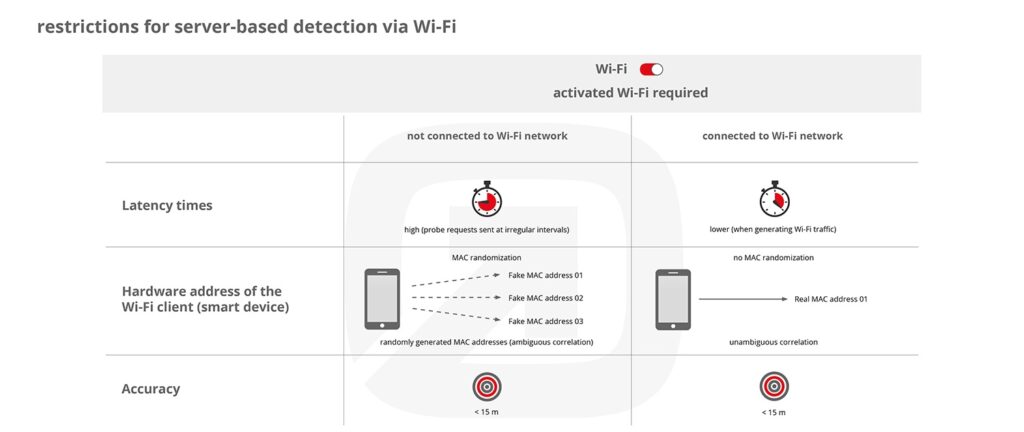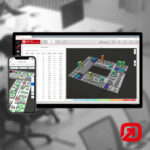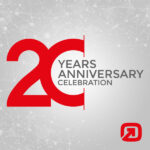Many businesses are interested in optimizing their workplace for maximum productivity while efficiently using the available space. Utilization reporting based on location data can demonstrate how different areas (offices, meeting rooms, social spaces) are being used – in real time and over time. It is possible to highlight the areas and extent of underutilization and identify the potential for more effective use.
However, with several technologies available for monitoring how workplace assets are being used, selecting the most appropriate one can be quite challenging. Depending on the specific use case and business objectives, some technologies may work better than others. Understanding how the technologies work and what restrictions might occur will help quickly narrow down the options.
WI-FI TRACKING?
Many businesses intend to use their existing Wi-Fi infrastructure for workspace utilization, detecting Wi-Fi signals from individual mobile devices. This method seems beneficial since there is not a lot of additional installation effort, and occupancy can be captured passively without requiring the workforce to change the way they work (e.g. having to carry an extra asset like a beacon).
However, Wi-Fi tracking entails restrictions that need to be taken into consideration. If the Wi-Fi client (smartphone) is not connected to a network, latency times of up to 5 minutes result from the irregular sending of “probe request” (scanning for available access points), which is controlled by the mobile operating system and cannot be influenced. In addition, due to randomly generated, changing MAC addresses (“MAC randomization“), the smart device or the actual number of devices in an area cannot always be determined unambiguously. As a result, utilization data may not be very accurate.
If the smartphone is connected to a Wi-Fi network, latency times are significantly lower as long as traffic is generated over the network. In addition, there is no MAC randomization, which means that the device can be uniquely assigned. The position accuracy (under 15 meters) is not affected by the connection to an access point.
Moreover, Wi-Fi tracking data can also prove faulty if individuals do not habitually carry their smartphone with them at all times or if Wi-Fi is turned off on individual devices.
BLUETOOTH LOW ENERGY
Bluetooth Low Energy solutions are a suitable alternative that use beacons (combined with infsoft Locator Nodes) to provide much more accurate workspace utilization insights than Wi-Fi tracking. Using BLE provides a better accuracy (less than 8 meters), and the beacons can be assigned unambiguously. A tracking system based on BLE is also relatively inexpensive to roll out, and beacons can run on button cells up to more than five years.
In the end, choosing a technology to track workplace utilization necessitates first deciding what questions you want to address with the tracking system. Furthermore, collecting data is only half the battle: Evaluating and analyzing the information is essential in order to make educated, cost-effective decisions about your workspace. infsoft’s Analytics tool provides utilization analytics in the form of heatmaps, granular reports and customizable dashboards.
We are happy to help you find a solution that works best for you – don’t hesitate to get in touch.








